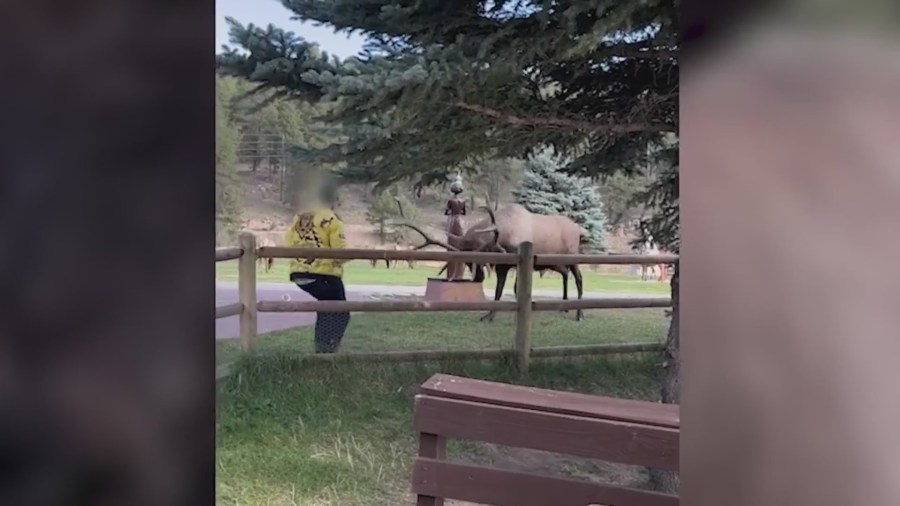In a recent incident at Evergreen Lake, Colorado, a video has emerged showing a man throwing what appears to be coffee at a bull elk. Filmed by bystander Matt Roehl, the footage captures an altercation that unfolded as the man attempted to navigate his route to work, expressing frustration over the presence of the elk blocking his path. The encounter highlights not only the challenges of coexisting with wildlife but also the impulsive reactions that can occur when people and animals share the same spaces.
The man’s initial response was to yell at the elk, which remained unyielding. When the bull elk charged at him, he reacted by throwing his beverage in its direction. Roehl, who recorded the event, noted the man’s dilemma—he was simply trying to get to work while the elk was asserting its presence. Fortunately, the situation did not escalate further, and nobody was injured during this tense moment. This instance is a reminder of both the unpredictability of wildlife behavior and the importance of human restraint in such situations.
The incident prompted remarks from Colorado Parks and Wildlife, which emphasized the legal and ecological ramifications of disturbing wildlife. Officials reiterated that visitors should never approach wild animals and highlighted that harassing them, as the man did, is against the law. These guidelines are essential for maintaining not only personal safety but also the well-being of the animals themselves. Wildlife can become stressed or defensive when threatened, leading to greater dangers for both animals and humans alike.
Roehl, the observer of the incident, expressed hope that he would not witness such conflicts between humans and wildlife in the future. He advocates for giving wild animals the space they need, recognizing that encroaching on their territory often leads to unnecessary confrontation. This perspective is vital in fostering a harmonious relationship between humans and wildlife, especially as urban areas expand into natural habitats.
The conflict between humans and wildlife is becoming increasingly common, particularly in regions where residential development encroaches on animal habitats. Educating residents and visitors about respectful cohabitation is crucial, as this can prevent the escalation of similar incidents. By adhering to best practices such as keeping a safe distance from wildlife, individuals can contribute to the protection of both themselves and the natural environment.
In conclusion, the incident at Evergreen Lake serves as a significant lesson on the importance of respecting wildlife and understanding their behaviors. Observers and residents must be mindful of their interactions with animals, ensuring that both people and wildlife can coexist peacefully. Promoting awareness and education around wildlife encounters can help mitigate risks and foster a healthier relationship with nature.

